Drips in the Underground: Creatively Activating Urban Ambiances
by Kristen Sharp
After the Deluge, 2018, by Kingsley Ng is an immersive, multi-sensory site-specific installation located in the Tai Hang Tung Stormwater Storage Tank, Sham Shui Po, Kowloon, Hong Kong. The work involves sound, theatrical sculptural installation, text, a sound walk and guided historical information about the site. Using sound, smell, touch and light in a spectacle to activate material, social and symbolic resonances about urban ecologies, Deluge is focussed on key tropes of water, air and environmental mitigation. Deluge works with the site of the storage tank and surrounds to create a focused, embodied experience for the audience. The atmosphere during the performance of the work expands perceptions of the unpredictable yet cyclical forces of water in urban environments and how these forces are managed.
This paper examines how the sensory and embodied experience of Deluge articulates a reverberant site that engages the socio-spatial contours of the water management system, including the hidden labour involved in creating and maintaining it. Through an affective and poetic reimagining of site through walking, sound and installation Deluge questions the apparent disjuncture between the mythic, spectacular and catastrophic images of flood management and the often-invisible activity of the people who work with these urban water management sites. The continual push/pull between the material, social and symbolic makes Deluge a significant example of creative activation of ambiance and how it can be used to allow new perceptions and relations with urban space to emerge.
For Jean-Paul Thibaud ambiance is not a discrete object of perception but rather something which emerges from the sensory. Ambiance activates an in-between space between the material environment, senses and perception (Böhme and Thibaud 2017, 1). Ambiance emerges from an encounter between the subject and the material environment. Importantly, this is not a discrete experience that is separate from the social:
Any ambiance is embedded in common gestures and forms of sociability. It involves social performances that actualize the resources of the built environment and accomplish our ways of being together (Thibaud 2019, 3).
Likewise, sound in art is used as a critical element that activates the experience of ambiance, but it is part of a larger immersive experience – of smell, sight and bodily movement. These experiences are intimately intertwined with symbolic elements generated through the social and the material. In the case of art in public space, the everyday functions of a site, its history, its relationship to community and to the environment become critical elements in the activation of ambiance. Such art encounters provide an opportunity to open oneself to the world through ambiance and to be a part of a world that is unfolding and becoming. Thibaud (2017) speaks of an ambient becoming of the urban world in which an “ecology of the senses” generates a greater attentiveness to “atmospheric existence”. This has the potential, when applied to immersive art experiences, for ambiance to be used as a tool to bring the external into the internal and to integrate these together to make audiences feel a part of the world (Ibid.) Brought forth as it is through the sensory encounter, ambiance is not something that can be understood as tool-object, but rather as something to be examined through the power of multi-sensory affect. Artists use sound, and other sensory textures, to create spaces in which ambiance can open up perceptions of urban environments. In the particular example discussed here, an art experience in public urban spaces uses these qualities to re-imagine relations between nature-culture as a continuum.
1. After the Deluge
After putting on safety reflective gear the audience for After the Deluge (2018) is given a historical overview of the site and a safety briefing.1 We put on headphones to listen to a sound work by a long-time collaborator with Ng, flautist, composer and sound designer Angus Lee. We were then led on a walk through the site. The journey takes audiences across the soccer fields, which hide the tank below, into the pump house with its heavy and imposing machinery and then out into the street, following the old drainage route. In this process we are invited to become like a drop of rain and flow through the street. Like water droplets, our experience is physically determined by the conditions of the site. Like a droplet that is suspended, although never still, we are suspended in time and space through the multi-relational connections across time (past drainage and present infrastructure) and space (the sounds and felt experience of the walk and the sound work we are listening to). In starting the work with an overview of the history of the site and then a physical walk through the surfaces of the site, the audience is able to experience the tactile affects of socio-historical contexts. We are able to feel the open air and grass of the current playing fields, the physical presence of the giant mechanical machinery and oily smells of the pumping room, the hard, impermeable sidewalks with faint whiffs of petrol from passing cars as we follow the old water routes and finally we experience the distinct downward movement of the slippery ramp going into the dark interior of the tank itself with its pungent smells. All of these affective encounters draw audiences into a strong sensory connection to the site.
The embodied experience of air, the tactile impressions of the materials used for this environment and the functionality of the site as a form of water management control is activated by the work in such a way that it draws attention to the interconnections between urban spaces, engineering and the environment. This is particularly acute in drawing attention to the ways that practical services in urban design are often unseen and unheard, in particular when they are functioning well.
The massive stormwater tank, in which Deluge was presented, is managed by the Drainage Services Department in Mong Kok, Hong Kong. It is 7.5 metres high with a capacity to hold 100,000 m3 of stormwater – equivalent to forty Olympic-size swimming pools (Drainage Services Department). Hong Kong [has one of the highest rainfalls] in the Pacific region, and flooding has been an ongoing issue, particularly in older urban areas. The tank is used during the heavy rainfall to temporarily hold urban water runoff running down from Lion Rock towards Mong Kok.
Hong Kong’s rapid urbanisation, particularly post-1980s, resulted in Mong Kok and the surrounding area becoming overwhelmed with floodwaters due to increased surface flow. The flooding, which is a consequence of impermeable paved and concrete surfaces, which increase surface run-off, resulted in two notably severe floods in 1997 and 1998 around Nathan Road and Boundary Road (Drainage Services Department). The wall-text created by curator Stephanie Cheung is used within Deluge to reference the impact of urban development and changes to the topography, including the source of water runoff from Lion Rock:
“Buildings soar like oil prices;
the narrowing alleys lose sight of Lion Rock;
no entry to the soil”
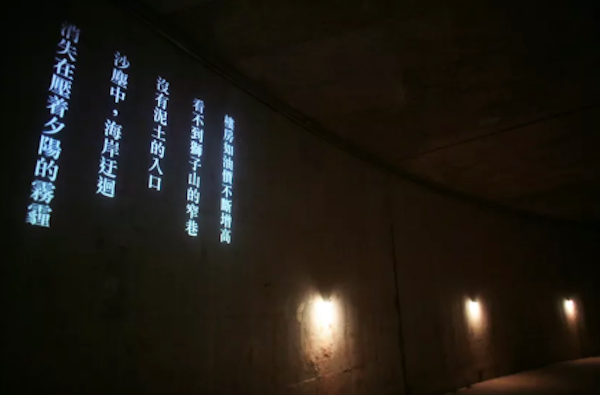
Figure 1. Kingsley Ng After the Deluge (2018). Installation/performance Tai Hang Tung Stormwater Storage Tank, Hong Kong. Text: Stephanie Cheung. Image: K Sharp.
This area also plays a significant role in the social-political history of Hong Kong. Tai Hang Tung was the site of a resettlement estate built by the British Hong Kong government in 1955. In the 1940s and 1950s the area was one of Kowloon’s largest squatter areas, populated mostly by refugee workers from China. The precarious, temporal housing was always under threat from flooding damage from typhoons. A devastating fire in 1952 and in 1953 left tens of thousands of people homeless. This marked the beginning of public housing development in Hong Kong in the 1970s and the construction of new public housing from the 1980s. The current demographic profile is a mix of public housing residents with a large portion of elderly residents (Ng 2018).
With the profile of the geographic landscape, the impermeable surfaces of urban development and the local climate prone to typhons in this area, various engineering solutions had been considered for flooding management. Impacts of construction on the surrounding community was a key consideration, as the tank is located in one of the densest residential/commercial places in Hong Kong. The Drainage Services Department developed an innovative solution in designing a massive water storage tank that could be located underground beneath a recreational park with a quiet invisibility (fig. 2).
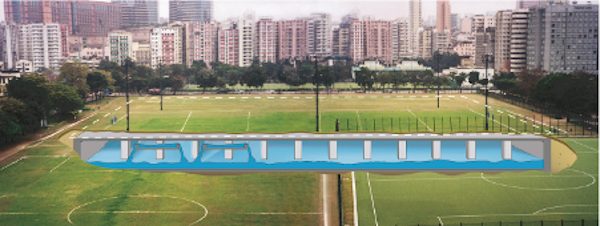
Figure 2. Tai Hang Tung Stormwater Storage Tank, Hong Kong. Image: Hong Kong Drainage Services Department
2. Environment and social contexts
After the Deluge was part of a Jockey Club New Arts Power festival, presented by the Hong Kong Arts Development Council (HKADC) and funded by the Hong Kong Jockey Club Charities. The Jockey Club New Arts Power festival aimed to enable arts programs, which were originally funded for overseas programs, to return to Hong Kong to connect with local audiences and communities and to develop projects that focussed on uniquely Hong Kong perspectives (Hong Kong Arts Development Council). Deluge was developed from a project Ng had developed for the OzAsia festival in Adelaide, South Australia, Recorded Light in 2016. During his time in Adelaide, Ng was inspired by the limited water situation in Adelaide in comparison with Hong Kong, where the opposite problem arises with having too much water and flooding (Ng 2018). Water in both cases is something of a problem for inhabitants and productivity. When Ng was developing this work a new drainage tank had just opened that was getting significant media attention. Through conversations with the Drainage Board and further investigation, Ng located the other, older tank in Mong Kok which also allowed public access through regular tours of the tank when it was not in use.
During one of the preliminary project development meetings for Deluge, Ng noticed a small flag in the workers’ offices commemorating Yu The Great. Yu (c. 2200 – 2100 BCE) was founder of China’s first dynasty, renowned for his work to develop a flood management system in the Yellow River Basin to stem the ongoing impacts from the Great Flood. This drainage and canal system in lowland areas allowed the land and communities to thrive and prosper. It is a story which emphasises heroic achievement and self-sacrifice for the good of others but also the engineering ability to control and order the forces of the environment (Montgomery 2016). In common versions of the story Yu worked for thirteen years to control the floodwaters. During that time, he only returned home three times, although never to enter or dwell in his home, just to pass by.2 The deluge is a significant trope in geomythology across many cultures and draws on a cataclysmic geological event to draw out themes of renewal. For Ng, the legend of Yu the Great not only connected with the engineering function of the Stormwater Tank, but it also echoes the acts of self-sacrifice of the workers in protecting the community and how they perceived their social role and value.
A significant element in the project was how the drainage department presented itself publicly. Workers deal with the dirty jobs of the urban environment: flood prevention and sewerage. Otherwise their labour and activities are largely hidden or ignored. They only become visible to the public when systems are not working or when construction activities become obtrusive. The Drainage Services Department wanted to promote what they do as important and to present a softer, more public face. For example, through the promotion of their activities on their website (Drainage Services) as well as through public tours of sites like the drainage tank. As a site, the stormwater tank is not really known when it is working, only when it fails. Ng was interested in this “silent” and “heroic” work and in revealing its hidden nature (Ng 2018). He was also interested in working with communities witnessing changes to their urban environment, such as the elderly residents and the stories of the workers.3
The audience for the work was diverse, including the art world community and local residents. Deluge attracted a large amount of media attention. As Ng notes this was partly due to the unusual location, but also because six months prior there had been a big typhoon. Macau was devastated, but Hong Kong was mildly impacted. Hong Kong residents were thinking about the type of urban infrastructure in Hong Kong that had protected them, and this created curiosity around an immersive art experience located in such infrastructure. Current and former residents shared stories about the site and memories of the flooding of the area. For the curator, Stephanie Cheung, it was this attraction to the site as much as to the artwork in the space that created an interesting ambiguity for the identity and status of the project (Cheung 2018).
The project team interviewed members of the local community and collected impressions and narratives for inclusion in the catalogue accompanying the project:
“Once there was so much water; I told them, ‘Stay there! Don’t cross the road’; I stepped forward, the current was so rapid that I was almost lifted off the ground. Then I said, ‘Don’t go. Let’s go back home’.”
“We called it ‘stinky sewer’ [the nullah]. Now the reclaimed sewer doesn’t have a name anymore. The place is now called Flower Market road […] or Flower Market Path? In any case you couldn’t sit there for long. You smell the stench even in an air-conditioned room. The stench was repulsive. Everybody knew.”
“Many people threw newborn into the nullah […] Back then, it was very backward. Sometimes, when people didn’t want their babies, they wrapped them in torn clothes and threw them away. There were lots of them in the nullah. I saw it every morning,”
The ambiance of the site is permeated by human relations and social histories that are directly related to what appears on first consideration to be a functional and impersonal storage tank.
The relationship between a tank engineered to control and manage the environment and the very human, social contexts around the environment and urban design, is a complex web that activates a critical space to reflect on the relationship between space, imagination and attuning to the world.
3. Droplets: becoming like water
Audio: Angus Lee, Music for ‘After the Deluge’. Commissioned by the Hong Kong Arts Development Council for the installation by Kingsley Ng ‘After the Deluge’ 2018, Tai Hang Tung Stormwater Storage Tank, Kowloon, Hong Kong.
After the Deluge encourages a direct physical relationship to the site that emphasises these human histories. The soundscape by Angus Lee is built around resonant reverberant impulses and abstracted rain-like textures. There is a gradual exploration of space through stereo panning in the headphones (this is later actualised through two speakers located underground in the tank). The overlay of the bass flute with electronic bleeps and tones signal material and technological spaces. During this time, you also hear the ambient sounds of the local traffic, shops and people bleeding through the headphones – generating playful interactions between the composed sounds and the present site. The sound is important in introducing the audience to the site. It orientates and sensitises people to the surrounding area. At the entrance to the tank the sound walk concludes. Yet aurality is activated in a different way through the text and stories, written by the curator Stephanie Cheung, projected onto the wall. These texts reference the history of the site and the urban development of the area and draw in the trope of water: “At the bend of the weir / It takes a leap” (fig. 3).
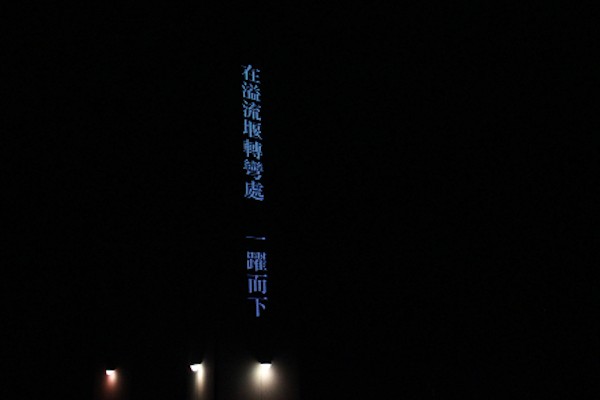
Figure 3. Kingsley Ng After the Deluge (2018). Installation/performance Tai Hang Tung Stormwater Storage Tank, Hong Kong. Text: Stephanie Cheung. Image: Esther Chan for ArtAsiaPacific. Hong Kong Arts Development Council and the artist.
Once we enter the tank the audience is presented with a theatrical sound, light and installation performance (see fig. 4 and 5). Ng wanted the audiences to “witness” the work through eyes, ears and body and not through the lens of phone cameras, in order to be open to what is happening around (Ng 2018). This emphasis on being present was for Ng part of the audience re-imagining themselves as a water droplet, as though translucent and in a state of heightened sensitivity.
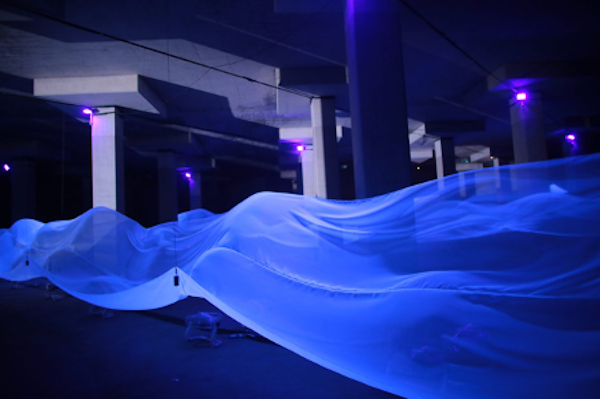
Figure 4. Kingsley Ng After the Deluge (2018). Installation/performance Tai Hang Tung Stormwater Storage Tank, Hong Kong. Lighting design by Chi-wai Lee and Sound engineering by Anthony Yeung. Image: Jockey Club New Arts Power. Hong Kong Arts Development Council and the artist.
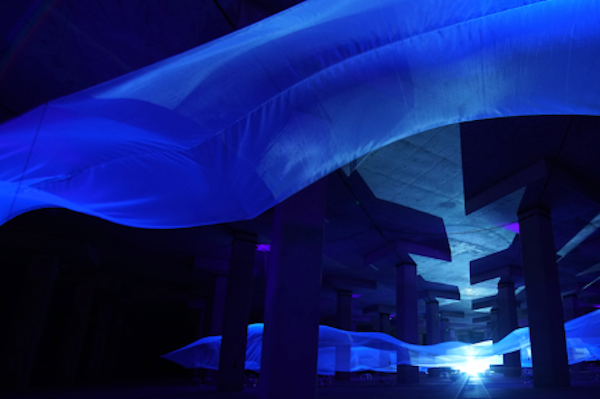
Figure 5. Kingsley Ng After the Deluge (2018). Installation/performance Tai Hang Tung Stormwater Storage Tank, Hong Kong. Image: Hong Kong Arts Development Council and the artist. Source: Video Art Asia by Cobosocial
While the material site of the underground tank had a clear presence in itself (sonically and materially), the emotional and symbolic meanings of the site and the ambiances were activated through a series of artistic gestures. These gestures were in themselves minimal: two speakers, one single moving light and suspended pieces of lightweight cloth fabric that rose and fell using fans. The objects are simple elements, yet they resonate and draw together the multifarious elements of the scale and significance of the space for environmental mitigation. The movement of the fabric created a strong metaphorical reference to the behaviour of water. Yet the calm, billowing movement of the cloth was at odds with the catastrophic movement of water that is experienced during floods and the wind force of typhoons. It was the fierce, destructive element of water and air that was hidden in the gentle flow of the movement of fabric. At the same time, the fabric contrasted with the heaviness of the tank – built to securely hold an immense amount of water. Somehow the contrast seemed to amplify rather than diminish the scale of the tank. The blue hue of the lighting clearly referenced water, but perhaps not quite the hue normally encountered in urban stormwater run-off.
4. Air: echo and reverberation
What is not captured in the visual/sonic documentation of the work is the feeling of being in this large, dark, dank space. It was claustrophobic both because it was underground and because its function is to fill with water. This sense of potential disaster was always present while on site. Yet the space was also incredibly expansive. It smelt of stale, wet concrete and faint sewerage smells. The air felt cold and damp on the skin, making you alert to the sense that you were underground. The air made it feel large. The audience is in a saturated, albeit understated, reverberant space – immersed in a sound and light field.
Alongside water, air is a key trope in Deluge. It is referenced by Angus Lee through the use of the bass flute in the sound composition and breathy sounds. The composition itself references fluidity of air in space, the sense of confined space and moisture articulated through sounds of saliva and what seems like muffled underwater effects.
In Deluge, sound, whether as part of the composed sound design or the existing environmental ambient sounds, plays a critical role in animating the spatial environment and creating a heightened awareness of the aural. The soundscape is built on resonant reverberations and echoes. Echo is a reflection back with repetition, which provides the perception of spatiality. To echo requires a boundary at a certain physical point. Yet the reflections themselves can also make this spatiality somewhat ambiguous – where are the edges of this space? The sounds work together in a multidirectional and continuous manner:
Echo, a phenomenon observed in nature, is the simple or multiple repetition of a sound emission, linked to a reflection in the space of diffusion. The term comes from Echo, a mythological nymph condemned to never speak first, but only repeat the last syllables of others. The psychogenetic signification of this effect was underlined as being possibly as important as the mirror stage (Augoyard and Torgue 47).
When an echo is reflected back multiple times across different surfaces it is characterized as a reverberation. Etymologically, the word reverberation comes from the Latin verb reverberare, meaning “to strike back, to reflect” (Augoyard and Torgue 2015, 111). With reverberation, sound is displaced so only a part of the sound source reaches the ear directly, mostly it travels indirectly, reflecting off surfaces: floors, walls and ceiling. These pathways take longer for the sound to move and return to the ear, and the energy is dissipated because the sound becomes adsorbed through surface reflections. Yet the ear experiences this as a continuum:
the ear integrates these different signals, which are merged by perception into a single sonic effect: reverberation (Augoyard and Torgue 2015, 111).
Reverberation is shaped by the spatial context, and while the distance from the initial source may diminish the effect, through reverberation the total effect can be even more intense. [If reverberation is considered not just as a physical affect, but rather one that is part of the social and symbolic contours of a site.] The surfaces surrounding the work Deluge are the ones that also reverberate (loudly) the histories, stories and communities of site. Perceptually, this merges not just in the ears but also through an embodied experience of the site. With the amalgamation of direct and reflected effect, reverberation complicates a singular reading space and also introduces a sense of orientation – we cannot always accurately orientate ourselves in the work. Like water, we are in a mutable state of being.
This is a useful way to consider ambiance: as an embodied experience that activates relations between the social, material and symbolic. Ambiance is not just one condition, but rather, as Jean-Paul Thibaud writes, multiple possible conditions emerging from relations between (Thibaud 2019, 3). Sound animates an environment and encourages a heightened sensitivity that integrates the audience into the work. Thibaud (Ibid.) speaks of ambiance as something that interrupts how we learn and how we realise things. The affective resonance of ambiance brings things outside of us into ourselves; thus, integrating multiple elements to make one feel like they are a part of the world.
In the same way that Ambiance is generated through material elements, it is also the social and cultural contexts of experience that create further edges of reverberation. These are not something in which sound sits, but also form the very fabric through which sound operates and that shapes the space in which sound emerges:
What makes noise and sound meaningful in the first place is precisely the sonic and cultural context against or alongside of which it emerges. … we can speak of these in terms of the background noise in the traces of cultural context that are transmitted in/on/alongside/through sound (Kelman 2010, 230).
The negotiations between sound, context and listener become productive sites of listening. In this way, we understand the work as part of the space and our own embodied experience as part of that space. Perhaps it could be understood as a soundscape without R. Murray Schafer’s selective, hierarchical and political distinctions. Geographer Doreen Massey considers space to comprise intersections of stories, positions, ideologies, ways of thinking and struggling. This tussling and intersections in-between produce spaces that are best understood as inter-relational and as a “co-existing heterogeneity” (Massey 2005, 9).
5. Small Gestures and Reverberations
Ng is interested in a method of “urban acupuncture” taken from Brazilian urban planner, architect and politician Jaime Lerner. Urban acupuncture comprises strategic little “pinpricks” that have the capability to effect positive change in urban life (Lerner 2014, 4). The insertion of an art installation into a functional urban drainage system radiates an immediate effect in the encounter with the immersive space. However, the impacts of the work, of the gesture, extend beyond. It is a point inserted into the urban energy flow, co-existing with the diverse social, material and symbolic elements of which it is a part. This energy extends beyond to generate sensitivity to the value and role of the environment and human management of water in urban design and a sensitivity to how this is formed in relationship with its communities.
The strategic insertion of Deluge into the city generates echoes and reverberations between the art work as artefact; the actions and histories around the work, including collaborations with communities; the sensory presence of sound, light, smell; and the lived experiences of air, water and temperature. The ambiances generated disturb the invisibility of this underground space, so vital to the maintenance of life in urban space, and also draw the audience in and make the audience part of the work itself. Neither the artwork, in this sense, nor the audience, are separate entities; they cannot be extracted from the ambient affect. Ambiance is an important part of the immersive and embodied experience. Likewise, sound is not a discrete element, rather it is part of multifaceted relations.
After the Deluge is a useful example of an immersive artwork that amplifies the sonic contours of an everyday urban environment in concert with a spatiality actuated through light, air, touch and sight. These elements are part of a complex system of ambiance that is activated through the interrelationships between society, culture and urban planning. The stormwater tank is a massive engineering management structure designed to mitigate environment impacts to ensure the health and well-being of a city. Deluge also actualises an embodied experience by drawing on symbolic references to myth and catastrophe. The embodied experience of Deluge, in which air flow and air quality are integral to the experience of atmospheric texture, as is sound and movement, is a powerful example of how ambiance can be used to amplify the affective encounter to facilitate critical reflection on the nature-culture continuum in urban environments and the lived experiences of urban design—making people feel a part of the world. The flow and movement between the material, social and cultural elements over the durational encounter with Deluge enables a re-imagining of ambiance as an accretion of all these experiences over time.
Works Cited
Augoyard, Jean-Francois, and Torgue, Henry, editors. Sonic Experience: A guide to everyday sounds. Translated by Andra McCartney and David Pacquette. McGill-Queen’s University Press, 2015.
Bohme, Gernot and Thibaud, Jean-Paul. The Aesthetics of Atmospheres. Routledge. 2017.
Cheung, Stephanie. After the Deluge. Jockey Club New Arts Power, 2018.
Cheung, Stephanie. After the Deluge by Kingsley Ng. 2018. Tai Hang Tung Stormwater Storage Tank, Sham Shui Po, Kowloon, Hong Kong. Jockey Club New Arts Power, Hong Kong.
Cheung, Stephanie. Personal Interview. 03 September 2018.
Drainage Services Department. “Tai Hung Storage Scheme.” The Government of the Hong Kong Special Administrative Region. Accessed 1 November 2019.
Hong Kong Arts Development Council. “About Us”. Jockey Club New Arts Power. Accessed 1 November 2019.
Kelman, Ari.Y. “Rethinking the Soundscape.” The Senses and Society, vol. 5, no. 1, 2010, pp. 212-234. Taylor and Francis, doi:10.2752/174589210X12668381452845.
Lerner, Jaime. Urban Acupuncture: Celebrating Pinpricks of Change that Enrich City Life. Island Press/Center for Resource Economics, 2014.
Massey, Doreen. For Place. Sage, 2005.
Montgomery, David R. “Geomythology: Can geologists relate ancient stories of great floods to real events?”. The Conversation, August 5, 2016, Accessed 1 November 2019.
Ng, Brady. “Universal Myths: Kingsley Ng’s After the Deluge”. ArtAsiaPacific, January 10, 2018. Accessed 1 November 2019.
Ng, Kingsley. Personal Interview. 03 September 2018.
Ng, Kingsley. After the Deluge. 2018. Tai Hang Tung Stormwater Storage Tank, Sham Shui Po, Kowloon, Hong Kong. Jockey Club New Arts Power, Hong Kong.
Thibaud, Jean-Paul. “Ambiance: An Atmospheric Sensitivity of the World.” Translating Ambiance, exhibition catalogue 5 September-22 September 2019, Yarra Sculpture Gallery, Melbourne, pp. 3-5.
Thibaud, Jean-Paul. “The ambient becoming of the urban world.” Vimeo. Uploaded by International Ambiances Network, 2017. Accessed 01 April 2020.


